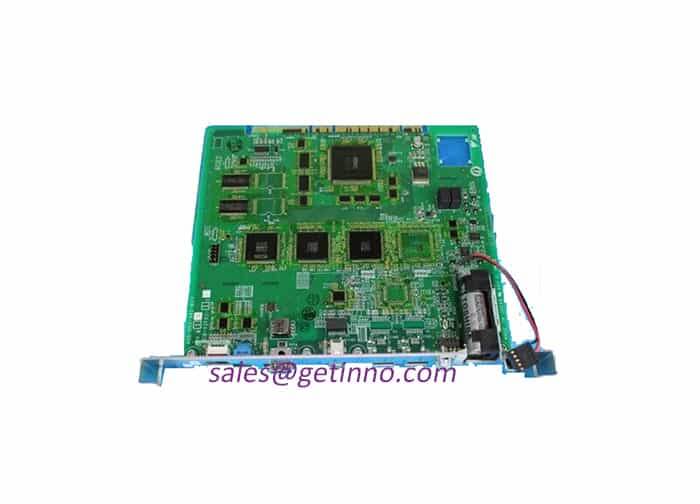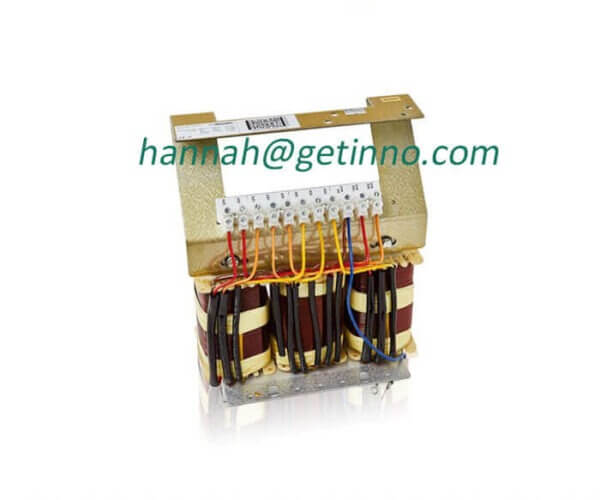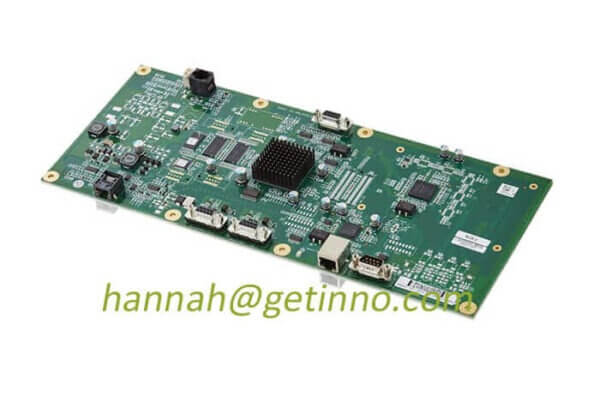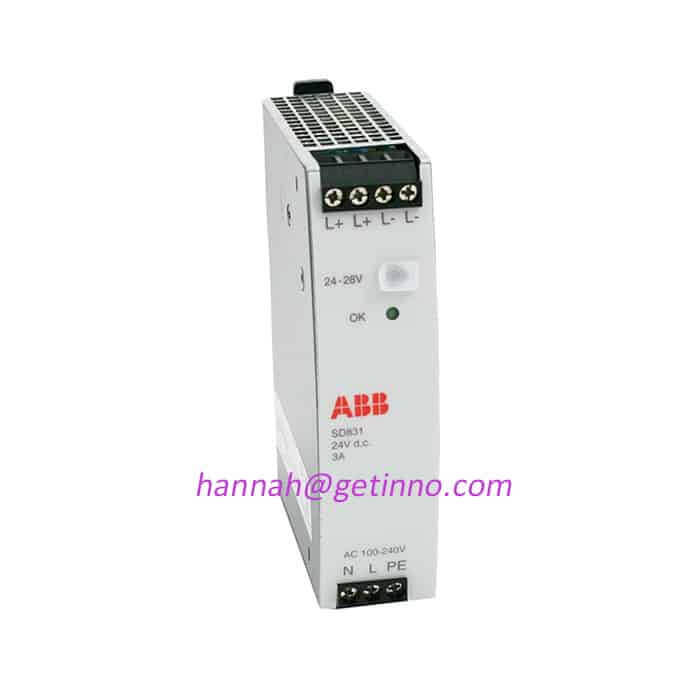What kind of big chess is the next game of home appliance leading robot Jianghu?
OFweekrobotNetwork News Global intelligent manufacturing is surging.
About half a month ago, Shunde kitchen and bathroom appliance leader, Guangdong Wanhe New Electric Co., Ltd. and ABB Robotics Co., Ltd. officially signed a strategic cooperation agreement; and earlier, the third-generation successor of Japan’s FANUC robot made a special trip to Shunde, Negotiated in-depth cooperation with microwave oven faucet Galanz; Midea has successively cooperated with Yaskawa of JapanmotorJointly established two robotics companies and acquired Germany in one fell swoopindustry4.0 Star KUKA Robot has more than 90% of the order equity.
In the Industrial Robot Industry, Yaskawa, FANUC, KUKA, and ABB are also known as the “Four Families” of global Robots. According to statistics, the total market share of these four companies in China is as high as 80%. In order to break the monopoly of foreign countries, domestic enterprises have been making efforts to catch up in recent years.
As a crossover player, what can Shunde home appliance leaders bring to the domestic robotics industry? What will Midea gain in the robotics field after massive capital mergers and acquisitions? What new industries will be stirred up among the fiercely competitive home appliance companies Jianghu?
The Big Four of Robots and the Three Musketeers of Shunde Home Appliances “Love”
In the field of global industrial robots, represented by ABB of Switzerland, KUKA of Germany, Yaskawa Electric of Japan, and FANUC, they are called the “Four Families” of robots. And from Shunde, Midea, Galanz, Wanhe are also well-known white goods brands. These two seemingly different industries, but driven by the wave of intelligent manufacturing, are closely linked.
At the end of June, Shunde kitchen and bathroom appliance leader, Guangdong Wanhe New Electric Co., Ltd. officially signed a contract with ABB Robotics Co., Ltd., a subsidiary of the world’s top 500 ABB Group, in Zhejiang. deep cooperation. Before signing the contract with ABB as a strategic partner, Wanhe has already cooperated with ABB on several intelligent transformation projects of production lines.
Four months ago, Dr. Kiyotori Inaba, the third-generation successor of Japan’s FANUC, one of the “Four Great Families”, and the senior manager, led a team to visit Galanz Shunde headquarters and discussed further deepening strategic cooperation with Galanz President Liang Zhaoxian. talks. In fact, in October 2016, Galanz signed a strategic agreement with Fanuc to cooperate to speed up the layout of intelligent factories and promote the in-depth application of industrial robots in microwave ovens, electric steam ovens and other industries.
Compared with the project-driven strategic cooperation between Wanhe and Galanz and foreign robot giants, the cooperation between Midea and the “Four Families” was earlier and more “radical”. As early as two years ago, Midea began to use its advantages in capital to carry out large-scale investment and mergers and acquisitions.
The cooperation with Japan’s Yaskawa Electric is its first step into the robot industry. In August 2015, Midea and Yaskawa of Japan each spent 200 million yuan to set up two joint ventures for industrial robots and service robots (the former holding 49% of Midea, the latter holding 60.1%). Relying on the most complete industrial chain resources accumulated by Yaskawa in the industry, Midea can focus on targeted development for the 3C industry.
At the beginning of 2016, Midea quietly acquired a 17.8% stake in Anhui Everte Intelligent Equipment Co., Ltd., a leader in the domestic robot industry, becoming the company’s third largest shareholder.
And Midea’s acquisition of German robotics giant KUKA has attracted global attention. Despite several twists and turns in the acquisition process, which lasted eight months, Midea finally won more than 90% of the shares for about 31 billion yuan and completed the tender offer for KUKA.With the help of KUKA’s world-leading robot body and control system, it will cultivate industrialautomationThe core competence of system integration application solutions, to seize the leading position in China’s intelligent equipment industry.
“We are delighted to have completed the final step of deepening our cooperation with KUKA. We attach great importance to KUKA’s strengths in all products and services, as well as its commitment to exploring innovative and intelligent solutions. Midea will work with KUKA’s outstanding management team and The Board of Supervisors cooperates closely. We look forward to working together to help KUKA seize the opportunities in the robotics market in China and other regions, and further expand investment.” Fang Hongbo, Chairman and President of Midea, commented on the capital cooperation between Midea and KUKA.
The business experience behind the “marriage” of home appliances and robots
Behind Midea, Galanz, Wanhe and others competing to “marriage” with international robot giants, a new industrial pattern integrating the white goods and robot industries is accelerating.
With the reduction of the domestic demographic dividend and the rise of production costs, the traditional labor-intensive white goods industry has competed in recent years to set off an upsurge of “machine generation”.
Among them, Midea has invested heavily in automation transformation since 2012 to reduce staff and increase efficiency. At present, nearly 2,200 sets of robots are used, and the investment in the field of factory automation has reached 6 billion yuan, which promotes production efficiency to increase by more than 15% every year. In the future, it plans to invest 1 billion yuan annually in the field of industrial robots and production automation.
“Smashing pots and selling iron also requires automation upgrades.” Under the leadership of Liang Zhaoxian, President of Galanz Group, Galanz also unswervingly moved towards the automated factory.
In recent years, Galanz has carried out in-depth cooperation with first-class equipment manufacturing companies in Italy and Germany. In 2014, it introduced automatic production equipment for dishwashers from Italy, and in 2015, it introduced automatic drum washing machine production lines. The world’s first automatic assembly line for microwave ovens, which was put into production in mid-2016, has increased production efficiency by 38.89% compared with the previous one, and the product straight-through rate has exceeded 99%. In March this year, the world’s first fully automatic electric steam oven cavity production line was launched. “In the past two years, Galanz has invested more in automation upgrades than the sum of the past 30 years.” Liang Zhaoxian sighed.
However, both white goods companies have their own considerations when choosing a robot partner. According to people familiar with the matter, most of Midea’s workshops used Japanese Kawasaki robots. Later, with the deepening of cooperation with Japan’s Yaskawa and Germany’s Kuka, the number of robots used by the latter two began to catch up.
1 2 Next page > page
Among the “Four Families” of robots, Yaskawa’s technical strengths lie in servo and motion controllers, etc.automation equipmentIn the research and development of key parts, the market advantage lies in the high cost performance. KUKA has been a relatively “pure” robot company since its birth. At present, its main business includes robot body manufacturing, system integration, and logistics and transportation, all of which are highly related to robots, and these are precisely for Midea’s power robots to form a powerful force. Replenish.
“The core technology and core components of robots are in the hands of foreign-funded enterprises, and we cannot catch up in the short term. If we repeat the construction from a low level, the chances of Midea winning are too slim. Only by cooperating with the strong players in the robotics field can we achieve a win-win situation. ” said Zhen Shaoqiang, general manager of Midea Robotics.
And Galanz “loves” Japan’s FANUC, as the only company in the world that uses robots to make robots. In recent years, FANUC has developed advanced technologies centered on flexible production, internet of Things and big data, including A number of fully automated solutions, such as FIELDsystem, ZDT zero-downtime function, which can realize the intelligent interconnection of equipment and advanced data analysis in the factory, and DeepLearning, which enables robots to have deep learning capabilities, can not be underestimated. It is the world’s leading century-old enterprise in the field of automation.
For foreign robot giants, the application of traditional industrial robots in the automotive industry has gradually reached the ceiling, and China has become the world’s largest robot application market for several consecutive years, especially in general industrial applications. There is still a broad space. As one of the few labor-intensive industries with global leading advantages in Chinese manufacturing, home appliances have become an important breakthrough for foreign giants to further open up the Chinese market.
Of course, the combination of home appliance companies and robot giants also requires the consistency of each other’s values and the inclusiveness of both parties to other partners. The reason why Rumei can “control” Yaskawa and Kuka at the same time is related to the fact that the latter two are not mutually exclusive. Galanz and Fanuc reached a cooperation because the cultures of the two companies are very similar. Everyone is a low-key “world number one”, and their attitude towards products is the pursuit of excellence.
What kind of big chess is the next game for home appliances + robots?
In the arena of global pursuit of intelligent manufacturing, Shunde home appliance enterprises have suddenly exerted their strength, dancing with international robot giants, and performing their own wonderful ways and styles of play.
From the perspective of cooperation mode, Galanz belongs to the “hardware faction”. Previously, we have been introducing advanced automation equipment from abroad, and together with Fanuc, we have signed a series of cooperation agreements in the fields of precision machining equipment for electrical accessories, automatic welding of microwave oven cavity and other fields. Liang Zhaoxian believes that the cooperation between the two parties is not a simple production line level, but a leap-forward breakthrough in the entire manufacturing field, including improving the precision and reliability of the core components of home appliances, and a high-quality manufacturing system that meets the needs of users in the new era.
Compared with Galanz’s love for hardware upgrades, Wanhe pays more attention to the construction of intelligent manufacturing software. After “Young Marshal” Lu Yucong became the president, he proposed the “cloud manufacturing” strategy as the future development direction of Wanhe. In November 2016, Wanhe introduced the production information management system MES, which is a solid step in the transformation of “intelligent manufacturing”. Through the in-depth integration of informatization and automation, the business data chain of enterprises in planning, procurement, logistics, manufacturing, warehousing and other links will be opened up, and a production management with lower cost, higher performance and greater flexibility in production and manufacturing will be created. system.
Joining hands with ABB Group, which has leading advantages in many fields such as electrical products, robots and motion control, industrial automation and power grids, will help Wanhe build a “smart factory”, promote the “cloud manufacturing” strategy, and accelerate the upgrade of intelligent manufacturing landing.
From the perspective of the whole industry chain layout, Midea regards the robot industry as the “second runway” for the group’s transformation.
The entire robot industry chain is mainly composed of upstream core components, midstream body manufacturing and downstream system integration applications. At present, domestic robot companies are mainly concentrated in the downstream system integration field. The upstream key components such as reducers, controllers, and servo systems mainly rely on imports, while the midstream body manufacturing is mainly monopolized by the four major foreign robot families.
On the basis of the joint venture with Yaskawa and the acquisition of KUKA, at the beginning of this year, Midea quietly acquired more than 50% of the equity of Servotronix, a leading Israeli motion controller company, which means that through investment and mergers and acquisitions in about a year, Midea is fully opening up the market including robots , automated production, automated logistics, industrial services and other whole industry chain.
In addition, robots will also serve as an important breakthrough in Midea’s “dual-wisdom strategy” (smart manufacturing + smart home). Zhen Shaoqiang believes that Midea’s “smart home” and the robotics industry are inherently interdependent. When the intelligence of home appliances develops to a certain extent, they will essentially become service robots; It can be reversely applied to the improvement of home intelligence.
Therefore, service robots have also become Midea’s key bets and areas that are deployed in advance. At the beginning of this year, the completed Midea Yaskawa service robot manufacturing base will focus on rehabilitation nursing, elderly and disabled products, and will achieve a production capacity of 200 million yuan. According to media reports, Kuka, which was acquired by Midea, also intends to enter the personal assistant robot market with the assistance of Midea.
“Midea makes robots as an industry. In the future, we will also deploy and involve in other aspects of the robot industry.” Fang Hongbo revealed in an interview with the media.
focus on
The first robot integrator of white goods rises in Shunde
Net profit to nearly triple this year
While Shunde home appliance companies have cooperated with international robot giants, Longshen Robot, which relies on the automation upgrade needs of the local home appliance industry, has also successfully broken through against the trend.
Guangzhou Longshen, the parent company of Foshan LongshenmechanicalFounded in 1998, the Co., Ltd. is a high-tech enterprise oriented to the field of automation, with robots as the core, integrating automation control system design, non-standard automation equipment design and manufacturing, product promotion and sales and technical supporting services. Later, there were more and more customers in Foshan, and Zhao Weifeng, the founder and general manager of the company, decided to formally establish the current robot company in Foshan, mainly responsible for the system integration enterprise of robots.
Located in Shunde, the home appliance capital of China, founder Zhao Weifeng also had work experience in the United States. Therefore, since its establishment in 2013, Longshen Robot has been accumulating automation and robot solutions suitable for white goods enterprise applications. At present, Longshen’s market share in white goods has exceeded 60%, becoming the first system integrator in this field, with a cumulative sales of over 1,000 robots.
Wang Youqing, director of the sales department of Longshen Robotics, admitted that it was difficult at the beginning, but gradually opened up the market with the focus and R&D strength in the field of white goods. “In the past few years, home appliance companies generally did not have a high understanding of robots, and our own technicians are not only proficient in automation, but also familiar with the production process of home appliances. Therefore, we can capture many projects that others cannot do.”
Today, Longshen Robot focuses on independent research and development, supplemented by introduction, digestion and absorption, and upgrading to fill the gaps. It has become a high-tech enterprise and a backbone robot enterprise with 39 national technology patents, including 10 software copyrights and 20 utility patents. There are 9 invention patents, and the company has independently developed dozens of industry-first projects.
According to publicly disclosed information, in 2016, Longshen Robot’s consolidated operating income was 88.3727 million yuan and net profit was 11.8622 million yuan. From January to March 2017, the operating income of the consolidated statement was 34.7912 million yuan, the operating profit was 3.8666 million yuan, and the net profit was 3.8378 million yuan.
The good performance of Longshen Robot has also attracted the favor of external capital. In May of this year, Hunan-listed company You’a Co., Ltd. planned to invest 78.75 million yuan in cash with its own funds to subscribe for 1.21875 million yuan of the newly increased registered capital of Foshan Longshen Robot Co., Ltd., accounting for 15% of the registered capital after the capital increase. This is following the completion of the A round of investment in October 2016, and Longshen Robot has obtained the B round of financing. Longshen Robot promises that this year’s net profit will reach 35 million yuan, a year-on-year increase of nearly 300%.
The Links: 3BSE036634R1 3BSE008518R1 IGBT
Pre: Bezos: We have the strength to challe... Next: Chatbot Fever (Part 2): Big Players, ...




